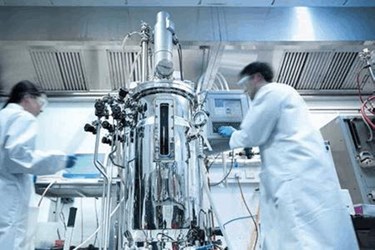A Balanced Diet: Feeding Bioreactor Cultures

When culturing cells, scientists need to account for the cost of supplies, process runtime, desired product yield and quality, and the organism being cultivated when designing appropriate feeding strategies. Understanding the strengths and weaknesses of each feeding strategy aids in designing efficient experiments with optimal results.
They Grow up so Fast
Cells in a closed system grow in predictable stages. After inoculation, cells initially enter a lag phase where little division occurs. During this stage, cells adapt to the conditions of their new environment, changing their metabolic processes to accommodate the nutrients present and synthesizing appropriate RNA and enzymes. Once the cells are ready to use the available nutrients, exponential cell growth begins via binary fission and the culture enters logarithmic (log) phase. Researchers typically study cellular functions during this phase because cells rapidly proliferate and are in their most active state. During late log phase, cells may be passaged into new media to avoid overcrowding or apoptosis. As nutrients become limited and waste products accrue, causing stress, cell growth plateaus into a stationary phase. In this phase, cell quantities remain constant as the number of cells dividing equals that of those dying; living cells remain metabolically active. Ultimately, nutrient depletion and waste accumulation will create conditions where life is unsustainable, and all cells enter death phase. The timing of each stage depends on factors such as cell species or phenotype, temperature, and nutrient availability.
Get unlimited access to:
Enter your credentials below to log in. Not yet a member of Bioprocess Online? Subscribe today.
